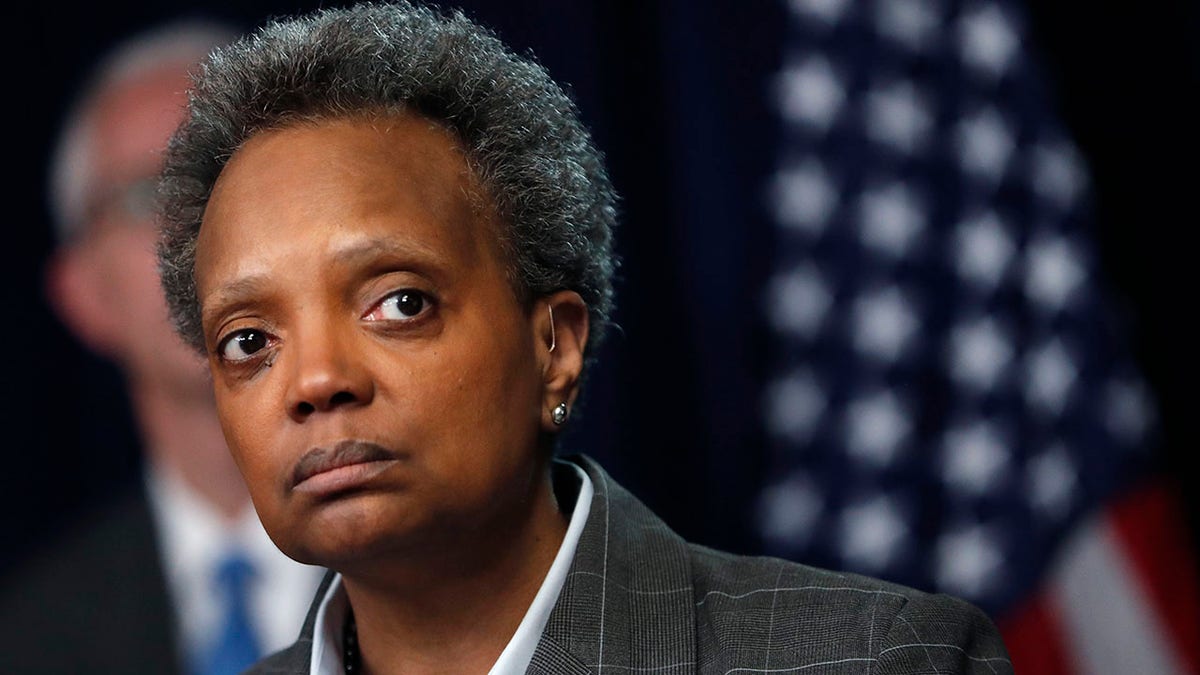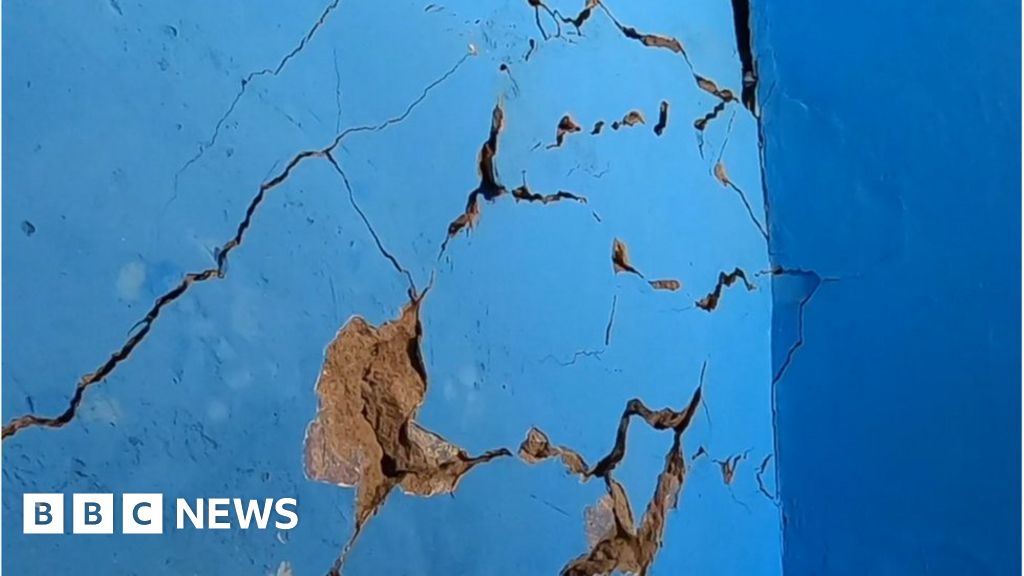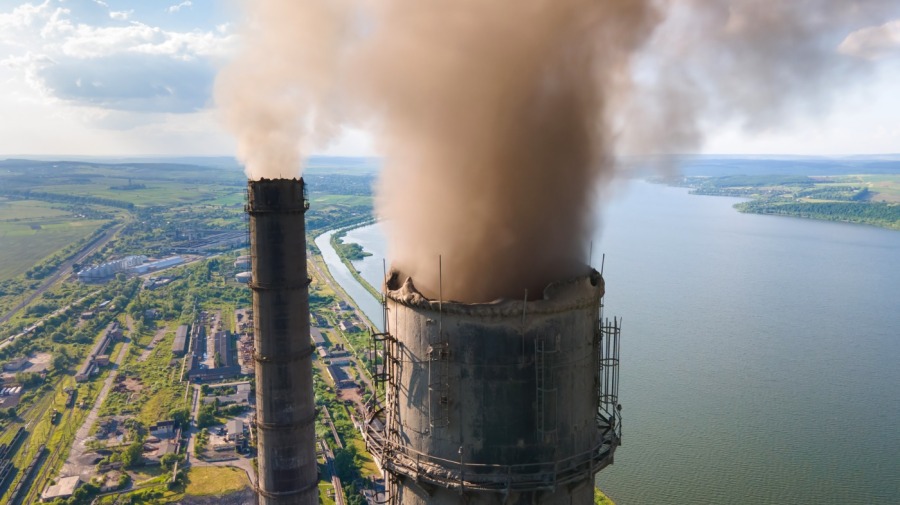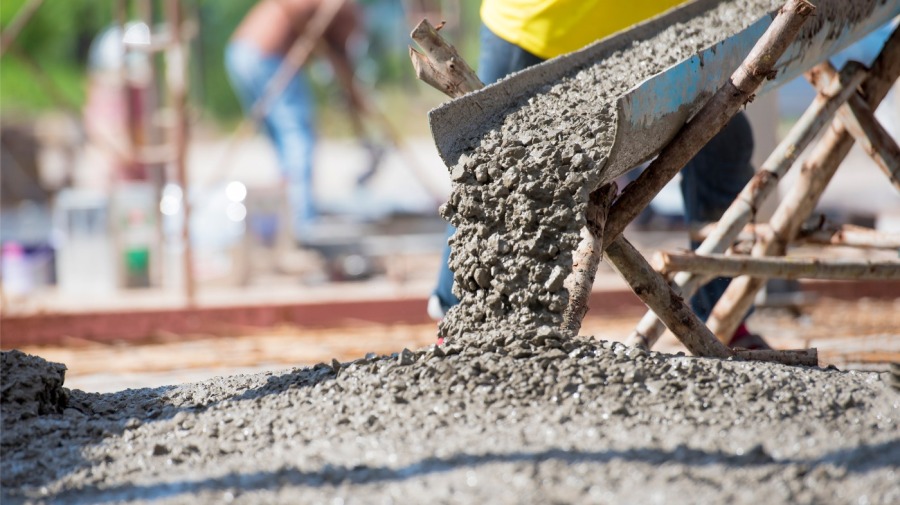Just In | The Hill
Future concrete buildings could be made more durable — and environmentally friendly — using the long-lost building techniques of ancient Rome, a new study has found.
Use of an ancient Roman concrete-mixing technique called “hot mixing” created blocks that could heal themselves when cracked, according to the paper published in Science Advances.
Such self-healing blocks allowed the Romans to build structures like aqueducts, monuments and stadiums that have survived for millennia amid wars, earthquakes and everyday urban pollution and chaos.
Researchers said blocks treated with the method — in which concrete was mixed with reactive quicklime under continuous heat — knit themselves back together within a few weeks after being fractured.
Their ability to self-heal came from chemical flecks left by that hot quicklime — which combined with rainfall from natural limestone and sealed cracks in the concrete.
Cracks in blocks that had been made without lime, by contrast — as all modern concrete is — never healed, the MIT team found.
Building modern concrete with updated versions of these ancient methods could lead to longer-lived buildings — particularly in the realm of 3D-printed structures, MIT professor Admir Masic said.
Welcome to Equilibrium, a newsletter that tracks the growing global battle over the future of sustainability. I’m Saul Elbein. Subscribe here or in the box below.
Today we’ll survey the damage from California’s continuing line of storms, which show little sign of stopping, and look at the Environmental Protection Agency’s efforts to limit soot-related deaths.
California storms just keep coming
California towns battered by days of heavy storms had a brief respite Friday before the onslaught begins again next week, the National Weather Service (NWS) warned.
This week’s storms washed out roads, knocked out power lines and wiped out thousands of trees.
They followed near-record New Year’s Eve storms, which had already left soils soaked and unable to absorb much water. Heading into next week, the state can expect “a dangerously wet pattern with multiple atmospheric rivers,” according to the U.S. Weather Prediction Center.
Not over yet: Another atmospheric river is due to arrive on Monday in the West Coast, bringing more large destructive storms, The New York Times reported.
A brief “intermission” in the conga line of storms “will abruptly end today,” the National Weather Service office in the northern California city of Eureka, Calif., wrote Friday.
Northern California will get up to 6 more inches of rain on Saturday.
Another large atmospheric river is poised to hit San Francisco and Sacramento on Monday, before weaving south into Los Angeles by Tuesday.
Insult to injury: This week’s storms killed at least six people, flooded houses and wrecked beaches, according to the Los Angeles Times.
High winds knocked out power to tens of thousands of coastal households, according to tracking site PowerOutage.us.
As storms lashed the exposed coasts, heavy downpours caused inland rivers like Northern California’s Russian River to swell their banks and flood surrounding areas.
Uprooting a legacy: The storms battered California’s urban and rural forests, killing thousands of trees in what one state official called “the signature of this particular event,” The New York Times reported.
Tree branches and whole trunks knocked over by the wind damaged homes, levees and power lines, according to the Times.
“Everything shook and went black. I thought it was an earthquake,” Victoria James told the Times, referring to how it felt when a tree plunged through her Sacramento apartment.
The past week has seen at least 1,000 felled in just Sacramento — which bills itself as the “City of Trees.”
Future risk: The repeated blows of strengthened storms, mixed with wet and unstable soil, is knocking out more trees than before, state officials told reporters.
“This is an extreme weather event, and we’re moving from extreme drought to extreme flood,” Karla Nemeth, the director of California’s Department of Water Resources, said earlier this week.
“What that means is, a lot of our trees are stressed. After three years of intensive drought, the ground is saturated, and there is significant chance of downed trees that will create significant problems.”
What kind of problems: Fallen trees in the backcountry could help fuel summer wildfires.
More immediately, as more storms approach, branches knocked from fallen trees can clog levees and culverts, causing them to flood.
Southwest Airlines meltdown cost at least $725M
A catastrophic flight-routing meltdown over the holidays cost Southwest Airlines between $725 million and $825 million, the carrier told regulators on Friday.
Extreme weather and failures in their scheduling system led Southwest to cancel 16,700 flights in late December.
The company will post a loss for the last quarter of December — about half of which comes from the costs of the December failure.
The company will lose as much as $425 million in revenue on refunded flights alone, our colleague Karl Evers-Hillstrom reported.
What happened? Southwest’s system was not prepared to deal with the cascade of cancellations and missed connections caused by December’s extreme weather, The New York Times reported.
As cancellations mounted — and crews had to take legally required downtime — Southwest couldn’t get planes where they needed them, leading to a logjam of further cancellations.
The crisis illustrated the risks when “a company that millions of people rely on moves too slowly to invest in crucial but unglamorous parts of its operation,” the Times reported.
What now? Southwest’s chief executive, Bob Jordan, has promised to accelerate improvements to the airline’s systems, The Hill reported.
But Jordan has not provided further details on the timeline or cost of these improvements, The Hill reported.
Undercounting costs: Southwest’s estimates of its costs only include direct expenses — rather than longer term costs from its very public failure.
But reputational damage is only a risk if customers have other options — and in America’s highly concentrated airline market, they often don’t, experts told CBS.
“The reputational damage is only as relevant as what consumers can do about it,” said Michael Mazzeo, who teaches strategy at Northwestern University’s business school and has examined airline competition.
“In a lot of markets, there is little or no competition to Southwest. When there is no outlet for consumers, the damage [to airlines] is more limited.”
OSHA: AMERICAN AIRLINES RETALIATED AGAINST EMPLOYEES
American Airlines allegedly retaliated against employees who reported that toxic fumes in plane cabins were making workers sick.
That’s according to a new investigation by the U.S. Department of Labor’s Occupational Safety and Health Administration (OSHA), based on a tip from a company whistleblower.
The investigation found the airline docked attendance points from employees who complained about the fumes and discouraged them from coming forward.
The Department of Labor cited American Airlines for violations of the Occupational Safety and Health Act of 1970.
American Airlines responds: A company spokesperson told Fortune that they “respectfully disagree” with the OSHA findings.
What’s the penalty? OSHA proposed a fine of $6,837 for the company, which posted $483 million in profits in the third quarter of 2022.
EPA announces new soot rule
The Environmental Protection Agency (EPA) on Friday ratcheted down acceptable limits for soot, a dangerous environmental contaminant generally caused by burning fossil fuels.
But many say the agency hasn’t gone far enough,
The EPA announced it would tighten national air quality standards for fine particle pollution for the first time in a decade, which it said would prevent 4,200 deaths.
But the agency itself estimates that about 5,000 more people will die early under its new standard who would have lived under a more restrictive one.
Keeping levels down: The EPA cut down the allowable levels of soot from 12 micrograms per cubic meter to between 9 and 10 micrograms, our colleague Rachel Frazin reported.
The decision tightens legislation put in place under former President Obama in 2012.
The agency says it will save $43 billion in public health costs over the next decade.
A final rule is expected later this year.
What is soot, again? A kind of superfine air pollution — smaller than 2.5 microns — released when fuels are burned.
It gets into the bloodstream and can cause asthma, heart attacks and premature death.
Should levels be lower? The EPA estimated that 9,200 lives — another 5,000 above the level currently proposed — could be saved if levels were cranked down further, to 8 micrograms per cubic meter, Frazin reported.
Exposure to harm: Levels below 8 micrograms mean exposing the population to “health harms that could have been avoided, and would miss a critical opportunity to meet President Biden’s environmental justice commitments,” Paul Billings, senior vice president at the American Lung Association, said in a statement.
Community voice: Yvonka Hall, the executive director of the Northeast Ohio Black Health Coalition, criticized the new soot rule proposal in a statement.
Hall pointed out that Black people are disproportionately affected by soot pollution due to redlining and that the proposal misses an opportunity to address these historical wrongs.
“The science is clear — we need the strongest possible soot standards to protect communities that are overburdened with the health impacts of dangerous soot pollution,” Hall said in a statement.
Follow-up Friday
Catching up on stories from earlier in the week.
Federal firefighters get a pay raise
U.S. spending on fire prevention lags behind other Western countries, but federal firefighters — including wildland firefighters — will get a pay raise under legislation passed as part of the National Defense Authorization Act, The Hill reported. “These brave men and women put themselves in harm’s way to save lives and protect our public lands—and if they contract an illness or disease on the job, we owe it to them to make sure they get the help they need,” Sen. Tom Carper (D-Del.) said in a statement.
Britain hits a wind record
A planned buildout of wind energy in the U.S. is leading to confrontations between project developers and communities. In the United Kingdom, meanwhile, wind power produced a record 21.8 percent share of national electricity in 2022, Reuters reported, with much of that came through the country’s considerable offshore wind resources — a sector President Biden is also promoting.
Tesla cuts prices across Asia
We covered Tesla’s failure to meet its 2022 delivery goals — and company price cuts make investors worry that demand for the company’s cars is falling. Tesla on Friday announced it was cutting prices for its Model Y and Model 3 electric vehicles (EVs) in China, South Korea, Japan and Australia, Reuters reported.
Please visit The Hill’s Sustainability section online for more and check out other newsletters here. We’ll see you Monday.
Equilibrium & Sustainability, Policy, Concrete block, Rome, sustainable living










